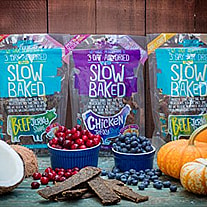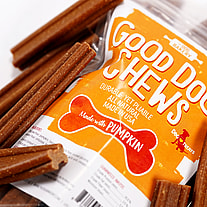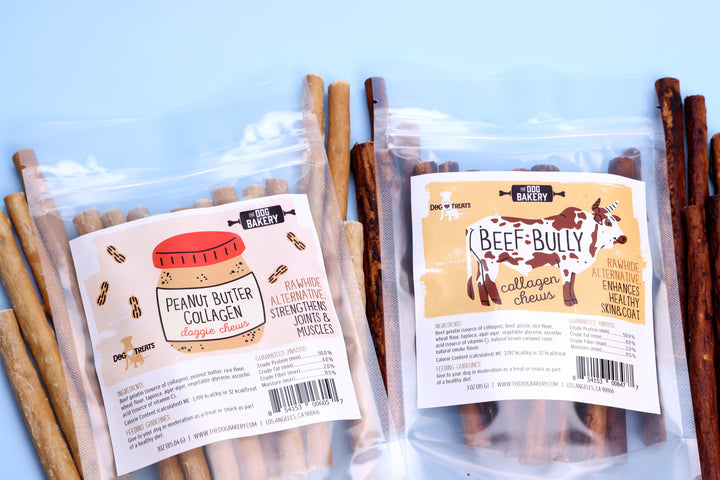4 Raw Dog Food Recipes You Can Make At Home
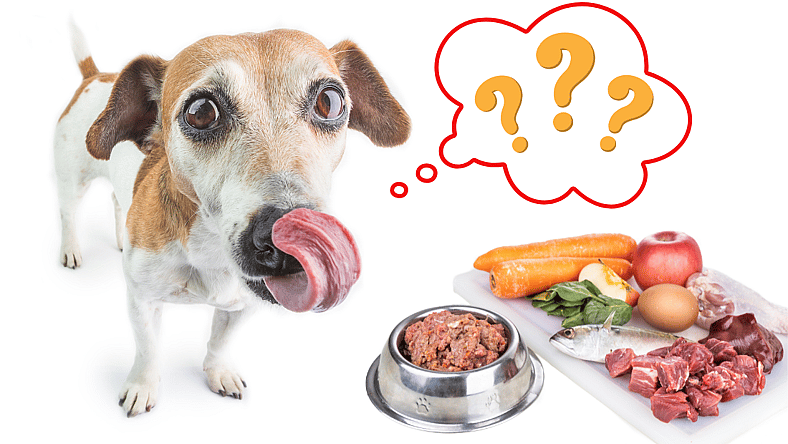

Making your own raw dog food at home gives you complete control over your dog’s diet. You get the peace of mind of knowing precisely what they are eating and can tailor their diet to meet their needs specifically. Making raw dog food can also be a fun way to bond with your pup, since you’ll be putting in lots of time choosing their ingredients, learning their preferences, and introducing fun new flavors.
However, if you decide to make raw dog food at home, it’s important you know what your dog needs and how to do it safely. In this guide, we’re covering what you need to know about feeding raw, how raw diets are formulated, and tips for safely feeding raw food to your dog.
 What is Raw Dog Food?
What is Raw Dog Food?
Raw feeding isn’t as simple as giving your dog some raw meat and calling it a day. In fact, one of the biggest mistakes dog owners make when transitioning their pups to a raw diet is neglecting to learn the full scope of their dog’s nutritional needs.
Raw dog food is made from a base of raw meat, raw organs, bone, and dog-safe veggies, fruits, and additional nutrient blends to create a fully balanced diet. Leaving the ingredients raw and unprocessed makes their nutrients more bioavailable to dogs. This makes raw food easier to digest for many dogs and ensures they are able to enjoy the full scope of the vitamins and minerals in their diet.
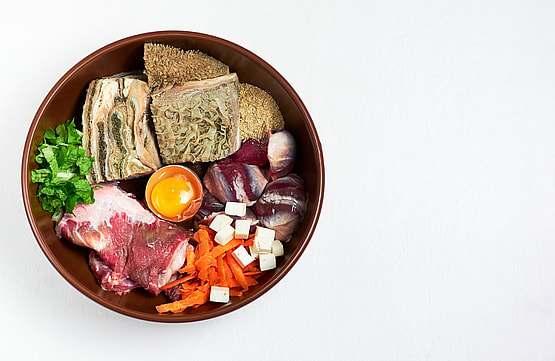
Raw diets are appropriate for dogs in every stage of life, and because dogs are carnivores, the high-protein composition of raw diets is considered biologically appropriate.
Note: dogs are carnivores, but they are not obligate carnivores. Dogs can (and do) enjoy and benefit from a range of fruits, vegetables, grains, etc., but the bulk of their diet should consist of animal protein.
Raw Meal Plan for Adult Dogs
The home raw dog food recipes in this blog are formulated for the needs of adult dogs. Adulthood arrives at different times for different breeds, so if your dog is young, consult with your veterinarian to determine whether they have stopped growing.
Raw meal plans for adult dogs are designed to maintain weight, support healthy joints, muscles, skin, and coat and give your dog all the nutrition they need for life as a pet. If you have a working dog, their nutritional needs will differ.
Raw Meal Plan for Seniors
Because raw dog food is so easy to digest, naturally high in moisture, and soft for easy chewing, it’s perfect for seniors. As your dog gets older, their nutritional needs may change, and you may find that you need to add extra ingredients to your dog’s raw food formula for adequate support. Again, consult with your vet to ensure your dog has the nutrients they need to support them in their golden years.

Raw Meal Plan for Puppies
Puppy nutrition is slightly more complicated than adult dog nutrition. Puppies need more calories, more calcium, more DHA and EPA, more phosphorus, and other key nutrients to support growth. Breed-specific qualities can also determine your puppy’s dietary needs. For example, large-breed puppies may need additional nutrients to support bone health.
If you are making homemade dog food for your puppy, it is extremely important to first consult with a vet.
 Benefits of a Raw Diet for Dogs
Benefits of a Raw Diet for Dogs
Why do some dog owners prefer to feed their pups raw food vs. fresh-frozen, air-dried, or kibble? Here are just a few of the benefits dogs can enjoy eating a raw diet.

1. Improved Digestion
For some dogs, digesting cooked food or foods that are high in fillers like grain and carbohydrates is difficult. Some indicators that your dog isn’t properly digesting their food include large poops! Believe it or not, your dog’s hefty dumps could be a sign they aren’t absorbing as many nutrients as they could be.
A majority of dog owners report smaller, less stinky, more regular poops after switching their dogs to raw food.
2. Support Bone & Joint Health
Many dog breeds suffer from bone and joint-related conditions including hip and elbow dysplasia, back problems, etc. Raw dog food contains crushed bone, which is high in key nutrients for bone and joint support like calcium, phosphorus, glucosamine, chondroitin, and collagen.
Because raw food may be more bioavailable than cooked or processed dog food, these nutrients become more easily absorbed when your pup eats a raw diet.

3. Healthy Skin & Coat
Raw diets notably contain naturally occurring omega-3 fatty acids, which are highly beneficial for skin and coat health. Omega-3s are also known for reducing inflammation and can help reduce symptoms of allergies, skin infections, and skin conditions.
4. Improved Dental Health
Carbohydrates are sugar, and sugar rots teeth! Because raw dog food is low in carbohydrates, it naturally has less potential to fuel dental disease, plaque, etc. Chewing raw, meaty bones can also help to “brush” your dog’s teeth and remove buildup.
5. Support Immunity
Feeding a raw, nutritionally balanced diet to your dog can help boost their immunity, protecting them from illness, chronic disease, and inflammation. Raw formulas that include raw fruits and vegetables are considered especially beneficial since these ingredients are typically high in vitamin C, vitamin K, amino acids, and antioxidants.
 How To Make Raw Dog Food
How To Make Raw Dog Food
There are several schools of thought when it comes to formulating raw dog food. The two most popular methods are the “Whole Prey” model and the “BARF” method. Which you choose will depend on your preference, but they are both considered appropriate methods for making balanced, all-natural raw dog food.
1. The Whole Prey Model: 80/10/10 Ratio Raw Dog Food
The Whole Prey Model is designed to mimic the diet a dog might eat if they were hunting in the wild. The concept is simple—an 80/10/10 raw diet should consist of 80% raw meat, 10% raw bones, and 10% raw organ meat. The organ meat should be further broken down into 50% liver, and 50% secreting organs like kidneys and heart.

Because this method does not include fruits or vegetables, it’s important to rotate your dog’s proteins. Rotating proteins ensures your pup is getting a broad range of nutrients that they would otherwise get from fruits and vegetables.
2. BARF Method: Biologically Appropriate Raw Food
The BARF method stands for “Biologically Appropriate Raw Food” and is based on what some people call the “Ancestral Diet.” BARF dog food includes raw meat, raw bone, and raw organs plus a small number of vegetables, seeds, and fruit. In the wild, dogs might occasionally eat these ingredients independently, but would also consume these foods when eating whole herbivorous animals.

Here’s how the BARF method breaks down formulating raw dog food:
- 70% raw meat
- 10% raw bone
- 5% liver
- 5% other secreting organs (kidney, heart, pancreas)
- 7% vegetables (leafy greens, carrots, peas, etc.)
- 2% seeds or nuts (chia seeds, flax, etc.)
- 1% fruit (blueberries, etc)
It’s also recommended that you rotate proteins when feeding using the BARF method.
Raw Food Feeding Calculator
If you want to make your own easy raw dog food recipes using the BARF guidelines above, try using this raw food calculator to calculate ratios for your dog’s needs.
Most adult dogs should eat approximately 2-3% of their body weight in raw food per day. So for example, a 10 lb dog should eat around 4.8 oz of raw food.
Important Notes About Safety
Raw ingredients can harbor parasites, bacteria, and harmful microbes, which is why it is so important to use proper sanitation and safety when making raw dog food.
Be sure to keep all ingredients properly frozen for storage and refrigerated for freshness, clean your surfaces, and keep raw dog food separate from human foods.
Raw Dog Food Toppers & Supplements
In addition to the basic ingredients in a dog’s raw diet, many dog owners choose to add additional toppers and supplements. Some common toppers include:
 Best Pre-Made Raw Food For Dogs: We Feed Raw
Best Pre-Made Raw Food For Dogs: We Feed Raw

If making raw dog food sounds like too much work, of the pre-made raw food for dogs on the market, one of the best comes from We Feed Raw. Fully nutritionally balanced, We Feed Raw’s formulas make raw feeding super easy and take all the anxiety out of making your own raw dog food.
We Feed Raw offers a huge range of formulas featuring different proteins, so you can rotate or choose the one that works best for your dog. Among their recipes, you’ll find venison, duck, lamb, chicken, and more.
Online raw dog food suppliers like We Feed Raw will also ship your food directly to your door, and deliver on a schedule so you never run out of dog food ever again!
Save 25% off your first subscription trial box.
 DIY Raw Dog Food Recipes
DIY Raw Dog Food Recipes
Now that you know a little about what it takes to make raw dog food, let’s dive into some simple raw dog food recipes to get you started!
1. Ground Beef & Chicken Liver Patties w. Yogurt

Created by Running To The Kitchen, this raw dog food recipe works well on its own, or as a raw topper for a kibble-fed dog. This recipe yields approximately 3 lbs.
Ingredients:
- 2 ½ lbs ground beef
- 4 oz. chicken livers
- 1 carrot, chopped
- 1 small apple, cored
- ½ cup baby spinach
- 2 whole eggs (with shell)
- ½ cup plain yogurt
- 1 Tbsp ground flaxseed
- 1 Tbsp olive oil
Instructions:
| 1. In a food processor, combine carrot, apple, and spinach. Process until finely chopped and well combined. |
| 2. Add chicken livers, eggs (with shell), yogurt, flaxseed, and olive oil to the food processor and process again until combined. |
3. Transfer the mixture from the food processor to a bowl and add ground beef. Mix thoroughly until well combined. |
| 4. Form patties about the size of your palm and place them on a parchment paper-lined baking sheet. Transfer to the freezer to set, then move the patties to an air-tight container or bag for long-term storage. |
| 5. Remove one meal’s worth of patties 12 hours before feeding to thaw in the refrigerator. |
2. Beef & Sardine Raw Dog Food

Created by Stella ‘N Spice, this raw dog food recipe was developed by a veterinarian and includes hemp seeds, an excellent source of omega-6 and omega-3 fatty acids. This recipe yields approximately 10.5 lbs of food.
Ingredients:
- 7 lbs lean ground beef (90% lean or more)
- 3/4 cup hemp seeds
- 16 oz canned sardines in water, drained and broken apart
- 4 tsp ground ginger
- 4 tsp kelp powder
- 8 eggs
- 4 egg shells
- 8 oz beef liver
- 8 oz broccoli
- 8 oz spinach
- 8 oz red bell pepper
Instructions:
| 1. Combine beef, hemp seeds, sardines, ginger powder, kelp powder, and eggs in a large bowl. Mix thoroughly to combine and set aside. |
| 2. To a food processor, add egg shells, beef liver, and vegetables. Process to combine, then transfer the mixture to the bowl with the beef and sardines. |
| 3. Mix all ingredients thoroughly, then portion according to your dog’s feeding needs. Freeze to store. |
3. Raw Rabbit, Chicken, & Beef Dog Food Recipe
Created by Dogs Naturally Magazine, this recipe includes rabbit as the base protein, making this a good raw dog food recipe for skin allergies. Novel proteins like rabbit are less likely to trigger an allergic reaction, and if your dog is allergic to chicken or beef, you could easily switch out these ingredients for novel protein ingredients from duck, lamb, rabbit, elk, bison, etc.
This recipe yields approximately 5.5 lbs of dog food.
Ingredients:
- 2 ½ lbs rabbit (typically a whole rabbit carcass)
- 1 lb chicken heart
- ¼ lb beef liver
- 4 eggs without shells
- 8 oz broccoli
- 1/2 oz chopped spinach
- 6 oz blueberries
- 2 g green-lipped mussel powder
Instructions:
| 1. Cut the rabbit and beef liver into bite-size pieces and add to a bowl with the chicken hearts. |
| 2. Combine eggs, broccoli, spinach, and blueberries in a food processor. Puree until combined, then add to the bowl with the rabbit and organ meat. |
| 3. Sprinkle with green-lipped mussel powder then mix to roughly combine ingredients and coat meat and organ pieces with puree. |
| 4. Portion the mixture into air-tight containers and freeze to store. |
4. Raw Beef & Chicken Neck Dog Food

Another recipe from Dogs Naturally Magazine, this recipe has a healthy portion of bone and nutrient-rich leafy greens like kale and dandelion greens. This recipe yields approximately 11 lbs of dog food.
Ingredients:
- 2 lbs 90% lean beef
- 3 lbs chicken necks with skin removed
- 1 lb beef liver
- 1 lb chicken heart
- 1 lb beef heart
- 10 eggs without shells
- 8 oz kale
- 8 oz broccoli
- 8 oz dandelion greens
- 12 oz blueberries
- 3 Tbsp hulled hemp seeds or hemp hearts
- 1 Tbsp green-lipped mussel powder
- 1/2 tsp Himalayan salt
Instructions:
| 1. Using a meat grinder, grind the beef, chicken necks, beef liver, chicken heart, and beef heart into a large bowl. |
| 2. Combine eggs, kale, broccoli, dandelion greens, blueberries, hemp hearts, mussel powder, and salt in a food processor. Process to combine thoroughly, then transfer to the bowl with the beef and organs. |
| 3. Mix all ingredients thoroughly, then portion, and freeze to store. |
DIY Raw Dog Food FAQ
Can’t get enough raw dog food education? Let’s learn some more about making raw food at home.
How do you make homemade raw dog food?
The actual process of making homemade raw dog food is relatively easy, it’s the formulation that can be difficult! To learn how to make raw dog food at home, check out the various recipes listed above.
What is the perfect raw diet for a dog?
The two most popular raw diets for dogs are the Whole Prey diet (or the 80/10/10 diet) and the BARF method! Both of these approaches to formulating raw food are widely accepted, and act as great guidelines for creating the perfect raw diet.
Remember, every dog is different, and it’s okay to experiment with the basic formula. If you aren’t sure, you can buy raw food ready to go. My dogs love the brand We Feed Raw.
Is it cheaper to make your own raw dog food?
Yes, in the long run, it is more cost-effective to make your own raw dog food, but not for everyone!
Being able to source ingredients is a major factor in the affordability of making your own raw dog food. For those that can reliably access fresh protein and organ meats, feeding a dog a raw diet on a budget is entirely possible.
What can I mix with my dog’s raw meat?
Raw diets can include a huge range of ingredients including raw meat, raw bone, raw organs, vegetables, seeds, fruits, seafood, and other nutrients! Check out the recipes we’ve included above to see some common raw dog food ingredients other than raw meat.
What is “80/10/10” in raw dog food recipes?
80/10/10 refers to the ratio of raw meat to bone to organs. This ratio is used in the Whole Prey method, which requires dog foods to include 80% lean raw meat, 10% raw bones, and 10% organs (5% liver and 5% excreting organs).
What are the best raw dog food recipes for German Shepherds?
Any of the recipes included in this blog would work well for a German Shepherd! Because German Shepherds are large breeds, they will naturally need to eat more than smaller dogs. Many German Shepherds are also high-energy and are often used as working dogs—in these cases, their caloric and nutrient needs may be different than a standard pet.
Consult with your vet to determine your dog’s particular nutritional needs.
What are the best raw dog food recipes for Pitbulls?
Dog breeds in the Pitbull-umbrella would do well on any of the recipes included in this list! Some Pitbull type dogs are prone to allergies, so the rabbit-based recipe might be the best option for their needs.
Remember, you can substitute any protein for another in these recipes, and it’s a good idea to rotate proteins to give your dog a good variety of nutrients.

